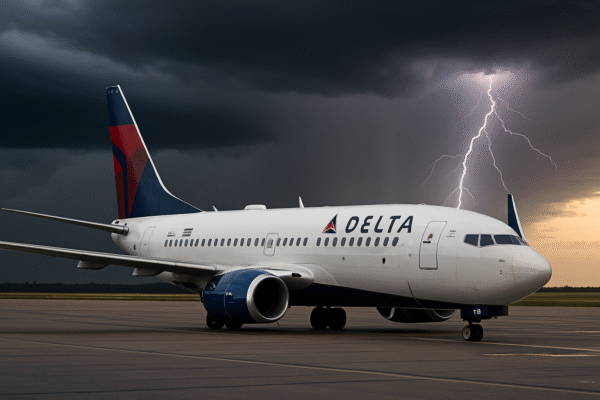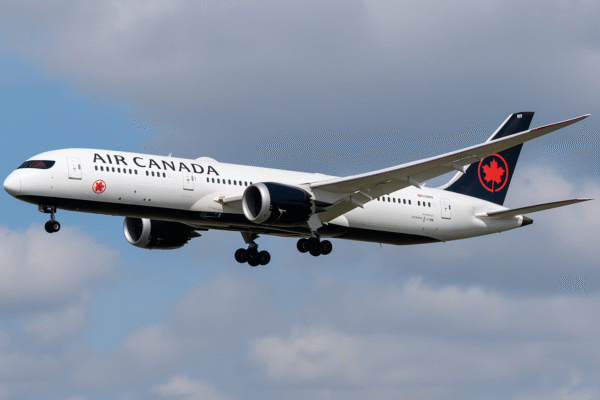LONDON, UNITED KINGDOM – Widespread flight cancellations and delays crippled UK air travel on August 30 after a technical failure at the National Air Traffic Services (NATS) paralyzed operations across the country. The system glitch, which originated at the Swanwick control centre in Hampshire, halted all outbound departures and triggered immediate demands for reform from major carriers including EasyJet and Ryanair.
The failure—caused by a breakdown in flight data processing software—effectively froze the UK’s airspace grid for over 40 minutes. Yet, the knock-on effects rippled for more than 24 hours, grounding hundreds of flights and stranding tens of thousands of passengers at major airports including London Heathrow, Gatwick, Manchester, Birmingham, and Edinburgh.
By the time the issue was resolved, at least 84 departing flights and 71 inbound flights were officially cancelled, with Heathrow bearing the brunt. The impact extended far beyond UK borders, as European hubs scrambled to accommodate displaced travelers and redirect air traffic.
What Went Wrong: The Swanwick Breakdown
At the core of the disruption was the Swanwick air traffic control facility, which manages a significant portion of the UK’s upper airspace. According to NATS, the glitch prevented controllers from automatically processing live flight plans—information essential to safely manage aircraft movements. With safety as the overriding priority, NATS issued a “flow restriction” that effectively grounded all outgoing flights while controllers manually resolved the data inconsistencies.
Though inbound flights were permitted to land, the lack of departures caused massive congestion on the ground. Aircraft waited on taxiways for hours, and airport terminals quickly became overcrowded as passengers sought answers.
Transport Secretary Mark Harper confirmed that the outage was not due to a cyberattack, but rather a systems fault that is now under urgent investigation.
Airlines Criticize System Fragility
Both EasyJet and Ryanair condemned the situation, arguing that the entire UK air traffic system should not be vulnerable to a single point of failure. Ryanair CEO Michael O’Leary called the outage “unacceptable” and urged the Civil Aviation Authority (CAA) to hold NATS accountable.
In a public statement, EasyJet demanded “a full review into how such a failure could happen and how to prevent recurrence,” especially given the timing during one of the year’s busiest travel periods.
Airlines were forced to cancel or reschedule hundreds of flights, leaving customers stranded overnight with limited rebooking options. Crews and aircraft ended up out of position, complicating recovery operations even after the technical issue was resolved.
Passenger Impact: Missed Connections and Frustration
Travelers at Heathrow, Gatwick, and other major airports experienced chaos. Many were left queuing for hours without updates, while others were told to leave airports and await rebooking instructions online. Families missed holiday departures, international travelers lost connecting flights, and business travelers reported missing crucial meetings.
“I was supposed to be in Barcelona by evening,” said Holly Rhodes, a passenger at Gatwick. “Instead, I spent eight hours on the floor of the terminal trying to get rebooked.”
Social media was flooded with frustrated messages and videos showing overcrowded terminals and stalled departure boards. Despite efforts by airlines to issue digital vouchers and text updates, the lack of immediate communication at many airports worsened passenger anxiety.
Industry Calls for Modernization and Backup Systems
This is not the first time that UK aviation infrastructure has come under scrutiny. Aviation experts have long warned that NATS, despite being one of the most advanced systems in Europe, lacks adequate redundancy and is vulnerable to cascading failures.
“Air traffic control is the beating heart of aviation,” said Professor Roger Morris, an aviation systems analyst at Cranfield University. “If that heart stops, everything else collapses. It’s time the UK invested in stronger failover mechanisms.”
The incident has revived conversations about airspace modernization and better digital resilience. In 2023, the UK Civil Aviation Authority and NATS jointly proposed upgrades under the “Airspace Modernisation Strategy” — but progress has been slow due to funding constraints and regulatory hurdles.
The International Air Transport Association (IATA) and European air traffic management bodies are also expected to weigh in, given the regional ripple effect caused by the UK outage.
NATS Faces Investigation and Regulatory Scrutiny
With public pressure mounting, the UK government has confirmed that an independent investigation will assess the root causes of the failure and provide recommendations. CAA Chair Sir Stephen Hillier said the regulator will ensure “appropriate accountability” and examine whether NATS breached any obligations under its license.
NATS, a partly privatized entity with the UK government holding a 49% stake, apologized for the disruption and pledged full cooperation with the review.
Meanwhile, aviation analysts warn that another major failure could undermine public confidence in UK aviation—especially as the sector continues recovering from COVID-era setbacks and strives to meet growing demand from both domestic and international travelers.
Looking Ahead: Avoiding a Repeat
As scheduled operations resumed by Thursday morning, attention now turns to whether the UK can implement structural safeguards to prevent such breakdowns in future.
With airlines, passengers, and regulators aligned in their frustration, industry observers believe this crisis could mark a turning point for UK air traffic control systems.
For travelers, the hope is that accountability turns into action—and that the skies over Britain remain not only safe but also reliably open.
For more travel news like this, keep reading Global Travel Wire



















